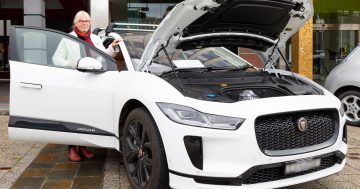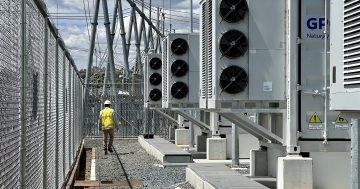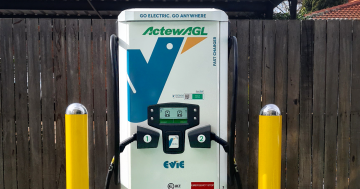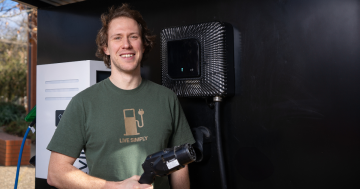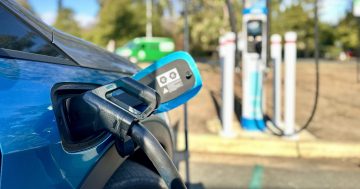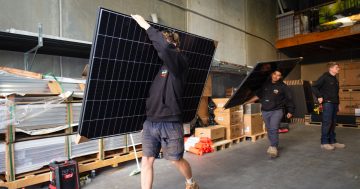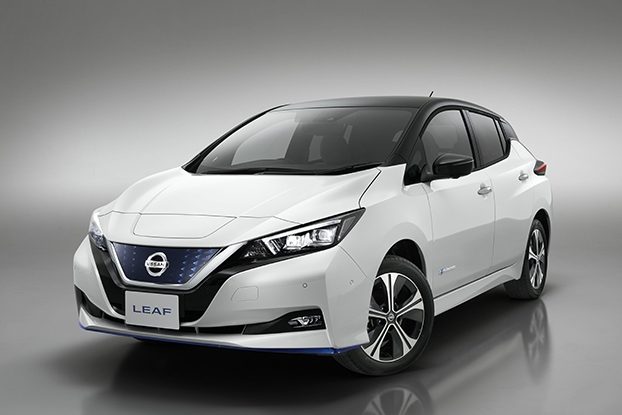
The 2021 Nissan Leaf e+ can feed electricity back into the grid and power homes and businesses, as well as get you from A to B. Photo: Nissan.
It’s so much more than a car. That’s the promise electric vehicles hold for households, businesses and the electricity grid.
That’s because they are essentially batteries on wheels, and those that can discharge power into premises and the grid could play an integral role in an eventual entirely renewable power system.
A pioneering pilot program using the ACT Government car fleet is about to launch in the ACT that will test the ability of bi-directional EVs to help stabilise the grid and their potential to be a power and income source.
A consortium comprising the government, ActewAGL, Evoenergy, SG Fleet, Jet Charge, ANU and Nissan is behind the $6.2 million project, which has attracted $2.4 million from the Australian Renewable Energy Agency (ARENA).
The federal agency sees the potential of more distributed energy storage connected to the electricity grid but has concerns about the impact on the grid of big power dumps at fast-charging stations.
New generation EVs, with the ability to give and take power, open up new possibilities for the renewables revolution. At present, the only vehicle with vehicle-to-grid (V2G) capability in Australia is the Nissan Leaf.
Under a just-awarded $1.5 million contract, Jet Charge will provide charging stations, smart meters and monitoring equipment for 50 Nissan Leafs operating normally within the government fleet using 50 bi-directional chargers.
The government says that if a Leaf is plugged in and a signal is received saying the frequency in the grid is beginning to drop, the vehicles can discharge some of the energy stored in their batteries back into the grid, helping to raise the frequency to an acceptable level and stabilise it.
Any electricity discharged will also generate revenue, and the trial will also determine how much could be made from doing this.
Traditionally provided only by coal, gas and hydro-electric power stations and more recently batteries, Frequency Control Ancillary Services (FCAS) are used by the Australian Energy Market Operator (AEMO) to maintain the frequency on the electrical system and provide a fast injection or reduction of energy to maintain grid stability.
The project will be the first time that a fleet of vehicles using bi-directional chargers will supply FCAS to the National Energy Market, helping to improve energy security and avoid blackouts.
It will also be the first time an EV fleet will be paid for providing electricity services, offering a model that could improve the total cost of owning an EV.
ANU renewables researcher Andrew Blakers recently told a Legislative Assembly committee that households would not need a separate battery backup system to support their power needs
This is because their bi-directional EV and smart meter will tell it when to re-charge at the most affordable time, and when the grid could do with an injection.
Seen on a mass scale, it would mean every EV would be part of an interconnected system and contribute to a stable grid.
Fleets make up more than half of all new vehicles sold annually in Australia, and the results of this trial will guide the future procurement choices of private and public sector fleet managers.
ActewAGL will run the trial, and the ANU will collect the data and analyse the results.
The chargers will be installed across 12 ACT Government sites: Philip, Belconnen, Gungahlin, Tuggeranong, and Civic Health Centres; Nature Conservation House, Belconnen; Cosmopolitan Building, Woden; 2-6 Bowes Street, Woden; Health Protection Services, Holder; and Winyu House, Gungahlin.
In a separate initiative, the ACT Government will also install 50 public rapid chargers across Canberra, and these are expected to be available by June 2022.



 ) without the out on the full kicks…
) without the out on the full kicks… 










